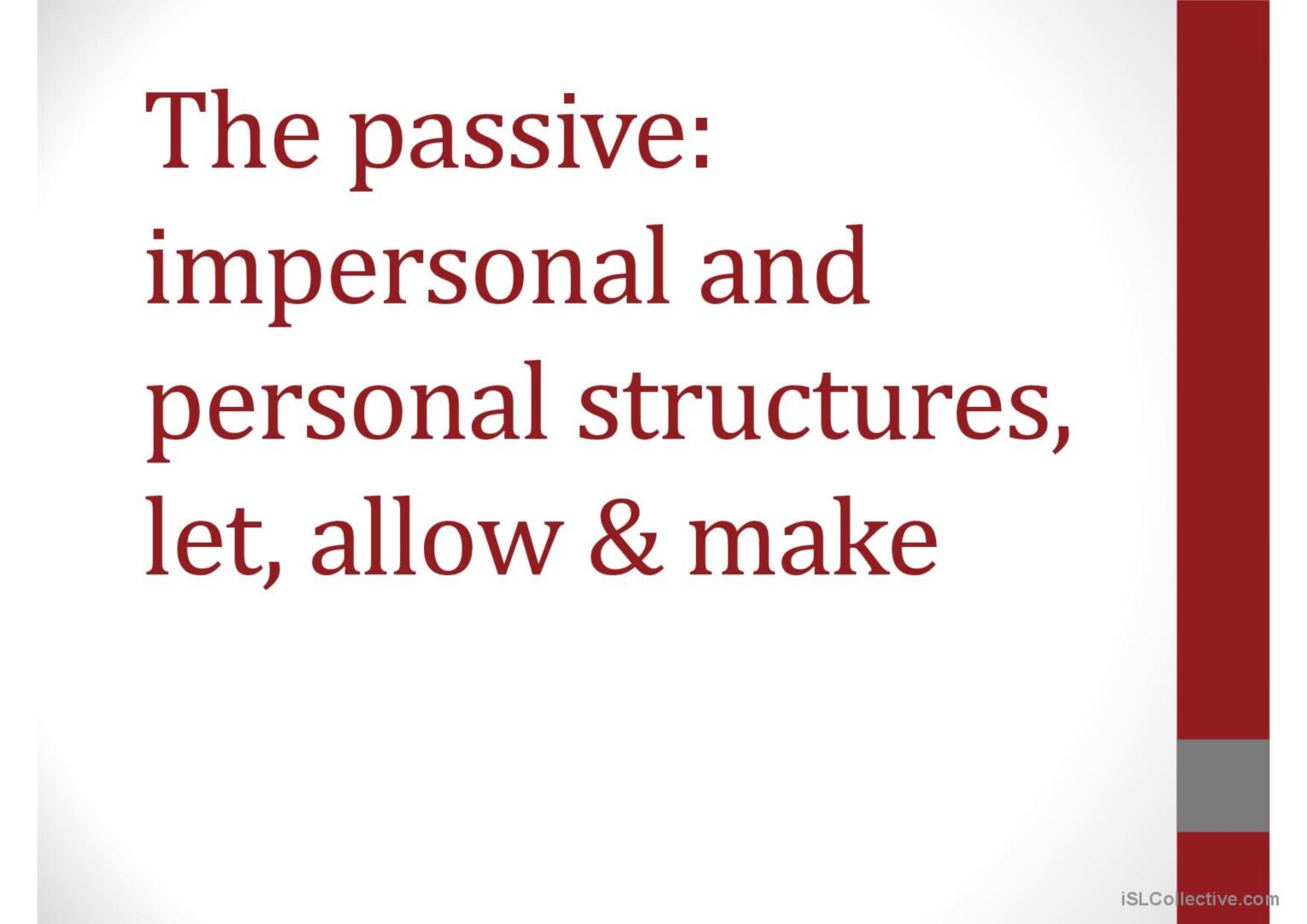Impersonal passive voice is a type of passive construction where the subject of the sentence is not specified. It is often used in formal writing or when the focus is on the action rather than the doer. This type of voice can make sentences sound more objective and formal.
Impersonal passive voice can be identified by the use of the word “it” as the subject of the sentence followed by a form of the verb “to be” and the past participle of the main verb.
Examples of Impersonal Passive Voice:
1. It is said that the project will be completed by the end of the month.
2. It was decided that a new policy would be implemented next year.
3. It has been suggested that a meeting should be held to discuss the issue.
4. It is believed that the results will be announced tomorrow.
5. It is known that the company was founded in 1995.
Impersonal passive voice can be useful in academic writing, scientific reports, or news articles where the focus is on the information being presented rather than the person or thing performing the action. It can also create a sense of objectivity and authority in the writing.
However, it is important to use impersonal passive voice judiciously and not overuse it, as it can make the writing sound dry and impersonal. It is also important to ensure clarity and coherence in the sentence structure when using this type of voice.
In conclusion, impersonal passive voice is a useful tool in writing when the focus is on the action rather than the doer. By using this type of construction, writers can create a sense of objectivity and formality in their writing. Remember to use it sparingly and always strive for clarity and coherence in your sentences.
